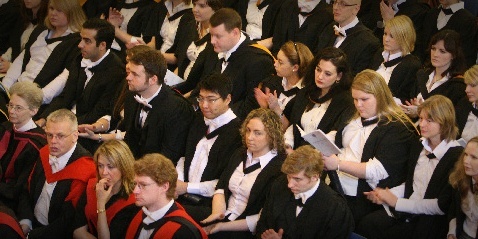The number of applications for places at Scottish universities next year has plummeted, even among Scots.
Universities admissions service UCAS has revealed that the number of UK-born applicants is down nearly 12% from last year.
Despite the availability of free tuition, the number of applications to Scottish universities from Scottish students fell from 2,607 last year to 2,342, while the number of Scots applying for places at university in England dropped from 1,355 to 1,147.
The number of English students applying for courses north of the border has fallen by 4.5% to 6,966, while the number of applications from Northern Ireland dropped from 938 to 787, a fall of 16.1%.
There has been no change in the number of Welsh students applying for a place at a Scottish university.
While the closing date for most applications is not until January, the deadline for medicine, dentistry and veterinary medicine courses, as well as Oxford and Cambridge universities, closed on October 15.
Robin Parker, president of the National Union of Students (NUS) Scotland, said confusion over fees could be stopping Scottish students from applying.
He said: ”We have real concern that these figures show that the confusion and fear of fees created by Westminster’s damaging fees policy is having an impact on people in Scotland’s decisions, even though the Scottish Government has rightly decided to not introduce fees.
”We just hope that it’s more that people are putting off applying rather than being put off from going to university altogether.”
He continued: ”It’s early days in terms of applying to university, but if this trend continues then it’s clear that the Scottish Government and Scottish principals will have to step in to end any uncertainty and ensure those people with the talent and ability continue to apply to go to university.”
Alastair Sim, director of Universities Scotland, said the number of applicants could rise dramatically by January.
He said: ”This set of applicant figures was always going to be volatile because of all the changes to fees north and south of the border.
”However, it’s very early in the applications cycle, and far too early to tell anything about student demand with any certainty.
”About the only thing that is clear from this data is that prospective students are choosing to weigh up their decisions more carefully and apply later in the cycle.
”That’s perfectly reasonable given all the changes, and the fact that many Scottish universities only set out their fee intentions for students from the rest of the UK a few weeks ago.”
A spokesman for Dundee University, where applications for the medical school have closed, said it would be premature to comment on applications until the deadline in January.
Universities experienced a surge in applications last year as people hoped to enrol before fees were introduced.
A Scottish Government spokesman said: ”Today’s release is the first in an annual cycle of information and is designed to measure applications only to a select number of courses and institutions.
”While applications to Scottish institutions and from Scottish pupils are broadly on a par with the rest of the UK, conclusions cannot be drawn from these figures. We await further publications with interest.”
